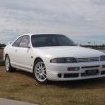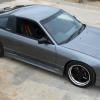Announcements
-
Similar Content
-
Latest Posts
-
By robbo_rb180 · Posted
New whiteline rubber bushes, maybe some adjustable arms (rubber ends like hard race for road car)no need for Sway bar if correct springs or going to be fine tune for the track. A proper alignment with corner balancing and coilovers with spring rate for the right purpose and setting droop correctly. -
By Dylancskyline · Posted
Hi guys Have a series 1 r33. Recently I took the car out for a drive when I got home it was fine I went to start it later that night and nothing....has full power from battery. Have checked and changed starter...relays are alll goood....looom under front drivers wheel was damage so fixed that. I can turn the key on and all the lights come up but when I GO to crank nothing I can hear the starter winning over there's nothing else I can think off cheaking ..... any help would be great. -
Hi all, other than coil overs - anyone running rear sway bars and other suspension upgrades? what does everyone recommend to improve the car handling? How about control bar upgrades etc. photo from vspec performance. thanks
-
Def happens. Happened to mine too. Have pics to prove. Super picky, I noticed the OP slowly dropping.
-
I've never seen this on a factory built RB26 have the screws come out, or gears break for that fact. Only once someone has touched the motor have I heard / seen it. I've seen a few factory built Rb25's shatter gears but we talking high mileage extreme beating at drift track, constant limiter for a full season. Well outside what it was built for.
-








Recommended Posts
Create an account or sign in to comment
You need to be a member in order to leave a comment
Create an account
Sign up for a new account in our community. It's easy!
Register a new accountSign in
Already have an account? Sign in here.
Sign In Now